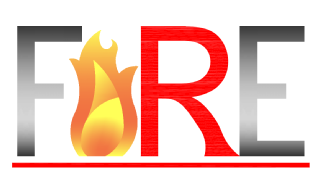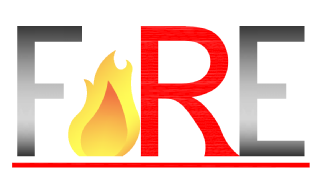Fire Risk Engineers Ltd
Risk Management
Fire Risk Assessment Assessments
All Building Types
Design Consultation
Fire Strategies
Feasibility Studies
Fire Protection Design
Fire Detection Design
Peer Review
Tender Preparation
Equipment Specification
Project Management
Site Inspection
Some info on fire systems
Fire Risk Engineers Ltd do not sell or recommend any materials, manufacturer or contractor unless specifically requested to do so by the client.
We are fire system engineers, and offer extensive design and inspection experience UK, European, US FM Global and NFPA fire safety standards and regulations including appropriate calculations
Fire systems:
- Fire Detection and Alarms
- Flame Detection
- Gas Detection
- Fire Sprinklers
- Water Mist
- Water Spray and Deluge
- Foam Protection
- Gas Protection
- Other Systems
- Peer Review
- Project Management
Fire detection is a vast subject predominantly covered by the broad topics of smoke, heat, flame and gas detection, although further technologies are developing.
 Electronic fire detection provides ideal protection having the advantage over sprinkler systems of high sensitivity, enabling early evacuation where life safety is the objective.
Electronic fire detection provides ideal protection having the advantage over sprinkler systems of high sensitivity, enabling early evacuation where life safety is the objective.
They can also be connected to other systems, to control the flow of air, the extraction of smoke or the operation of fire suppression systems.
Point type smoke detector units which detect smoke at a fixed location are the most common form of equipment found in buildings, often provided as a minimum to protect means of escape in accordance with BS 5839 in the UK, although wider ranging coverage is specified for example in sleeping accommodation.
Fire detection is probably the fastest developing type of fire safety equipment, because of its wide spread use, with point type multi-
Beam type detector units can be used to measure smoke between 2 relatively distant points such as in atrium or warehouses.
Aspirating type detection systems are highly sensitive systems sampling and analysing air at specific points. They are easier to hide making them popular where aesthetics are important, and adapt to many industrial uses, such as sampling air stacks.
Point type heat detection units are found in buildings, but being slower to react than smoke, are often used where smoke detection is susceptible to false alarms such as kitchens and workshops.
Heat detection is also found in the form of linear heat cabling which tends to be used for industrial purposes.
One benefit heat detection has had over smoke in the past is the ability to measure fixed temperature, rate of change of temperature and both together.
Ultraviolet (UV) and infra-
 Mapping of detectors requires experience and knowledge of the capabilities of the detection equipment, as well as knowledge of historic data indicating where fires are likely to occur.
Mapping of detectors requires experience and knowledge of the capabilities of the detection equipment, as well as knowledge of historic data indicating where fires are likely to occur.
 Flame detection is often used for executive decision making such as the operation of a foam deluge system, where unnecessary operation may have repercussions.
Flame detection is often used for executive decision making such as the operation of a foam deluge system, where unnecessary operation may have repercussions.
Their accuracy varies depending on the distance of the detector unit from the potential flame, so a number (N) of units are often required.
Despite their high reliability when correctly designed and maintained, flame detectors are often subject to a minimum of 2ooN voting system.
CO detectors are recommended in locations where carbon monoxide gas, a virtually undetectable gas to humans may be produced. It is produced by incomplete combustion of carbon-
Flammable gas detections are used in industrial locations where there is a risk of gas leakage.
 In these environments gas detection is recommended over fire detection due to their early warning of the existence of flammable gas, typically giving graded alarms before the concentrations reach 25% of the lower flammability limit.
In these environments gas detection is recommended over fire detection due to their early warning of the existence of flammable gas, typically giving graded alarms before the concentrations reach 25% of the lower flammability limit.
Mapping of detectors requires experience and knowledge of the capabilities of the detection equipment, as well as knowledge of historic data indicating where fires are likely to occur.
The location of detectors in consideration of gas vapour densities is crucial, as are the capabilities and limits of detection devices, particularly where multiple gases may be present.
Fire sprinklers systems are possibly the most reliable, versatile and multi-
 The argument for the installation of sprinklers is robust.
The argument for the installation of sprinklers is robust.
When designed, installed and commissioned correctly they will detect, operate and in many cases extinguish a fire with no external influence.
There are many sprinkler varieties, and the sector is one of the most stringently regulated building services in the traditional built environment.
It is no coincidence, when catastrophes such as the Grenfell fire occur, that more onerous fire sprinkler requirements have been introduced.
Undoubtedly it is only a matter of time before fire sprinklers become as common as a heating system in buildings.
The goal must be that the authorities are able to ensure the competency of these works.
In the UK industrial and commercial sprinklers systems are predominantly installed in accordance with the LPC rules which incorporate BS EN 12845 and domestic and residential systems are installed in accordance with BS 9251. We are fully competent in both UK codes of practice, as well as FM Global and NFPA standards.
Water mist systems have a similar format to sprinkler systems having a water supply providing design flow rates and pressures via a pipework arrangement to sealed discharge outlets known as nozzles in mist systems rather than sprinkler heads.
 Although there are benefits to mist systems, a measure of judgement should be used when considering claims that mist systems can match the requirements of sprinkler systems, use less water, and extinguish a fire whereas sprinklers only control fire, the latter clearly incorrect.
Although there are benefits to mist systems, a measure of judgement should be used when considering claims that mist systems can match the requirements of sprinkler systems, use less water, and extinguish a fire whereas sprinklers only control fire, the latter clearly incorrect.
Both systems use considerably less water than a responding fire and rescue service, and the water damage is always less than an uncontrolled fire, so the benefit of using less water is probably negligible.
The major difference and potential benefit of mist systems is their ability to flood an enclosure with atomised mist, similar to clean agents, which could disperse into the extents of the protected area, where sprinkler protection might be hindered, although sprinklers were never designed for this purpose.
Water mist systems discharge droplets in the region of 150 to 300 micrometers whereas sprinkler droplets are approximately 1000, or 1mm.
All water systems have superior fire-
Smaller droplet size means a greater surface area, and a faster cooling effect, but the reduced quantity of water used will result in less steam.
There are many sprinklers, ESFR, medium and high velocity nozzles and purposefully designed large droplet sprinklers, all having their own usefulness in the variety of fire suppression and extinguishing requirements, and mist systems are a useful addition to that list.
NFPA 750 was the leading standards on water mist systems for years, but the UK has now published BS 8489 commercial and industrial mist systems and BS 8458 residential and domestic systems.
Regarding superiority only time will tell if water mist systems have hit some magical balance between water usage and cooling.
Water Spray and Deluge Systems
Both water spray and deluge systems are similar in that they are not sealed by temperature detection elements, allowing water to flow freely when it reaches each nozzle.
 The difference between water spray and deluge is that water spray nozzles tend to be used directionally, for example to provide 3 dimensional coverage to a pressure vessel containing volatile products, whereas deluge systems are generally mounted at roof or high level, providing blanket protection, normally to a high hazard fire area.
The difference between water spray and deluge is that water spray nozzles tend to be used directionally, for example to provide 3 dimensional coverage to a pressure vessel containing volatile products, whereas deluge systems are generally mounted at roof or high level, providing blanket protection, normally to a high hazard fire area.
These systems are often known as special risk, and their design should only be carried out by someone with experience and knowledge of both the system design requirements and the equipment being protected.
The main use of foam application is for class B flammable liquid pool fires such as hydrocarbons and polar solvents.
There is a range of foams available but care must be taken when selecting an appropriate type, since for example a polar solvent can be destructive to none-
 Foams are classified as low, medium and high expansion, with respective air to foam expansion rates of up to 20 to 1, 20-
Foams are classified as low, medium and high expansion, with respective air to foam expansion rates of up to 20 to 1, 20-
Additionally the proportion of water to foam concentrate must be controlled in the range of 1% to 6% foam
Types of application include tank pourer's, base injection, bund pourer's, monitors, sprinklers, and hand held fire hose with foam pick-
Some of the issues in the use of foam are, chemical reactions, environmental performance, accurate proportioning, burnback and re-
Similar to water mist systems mentioned above, clean agent gas extinguishing systems provide either local application or total flooding of enclosures in order to extinguish a fire.
The most common application of gas extinguishants is commercial cooker hoods, but they are also used in electrical rooms, data storage, and other locations where the room contents has high value to the business or owner.
 www.prodeltafiresafetysystems.com
www.prodeltafiresafetysystems.com
Halo-
There are a number of Halo-
These gas extinguishing agents are known as electrically non-
Chemical agents use a physical cooling effect, the molecules absorb heat so that the temperature of the flame falls to a point below which it cannot propagate.
Inert gases work by displacing / reducing the oxygen level in air below 15% at which most combustible materials will not burn.
System operation relies on fire detection, which is usually designed to a higher intensity and should have higher reliability than if it were traditionally designed.
Most agents have adverse toxicological effects at various concentrations so it is essential that the protected enclosure is promptly evacuated, and that methods to delay operation are provided in some cases.
One of the safest agents is NOVEC 1230 accepted for use in normally occupied, whereas CO2 systems are only allowed in normally unoccupied rooms.
There are many other parameters to consider such as enclosure integrity, bottle storage, pressures and refilling.
We have carried out inspections of projects with over 100 separate gas extinguishing systems on a single site, which is extreme.
There are of course further fire protection systems not mentioned above which we would be happy to discuss.

 Portable fire extinguishers
Portable fire extinguishers
Industrial and domestic hosereel systems
Wet and dry riser systems
We would be able to carry out a review of designs for compliance with project, regulatory and compliance with applicable codes of practice.
We have experience of the management of system installation.
| Contact |
| Competency |
| projects |
| About |









